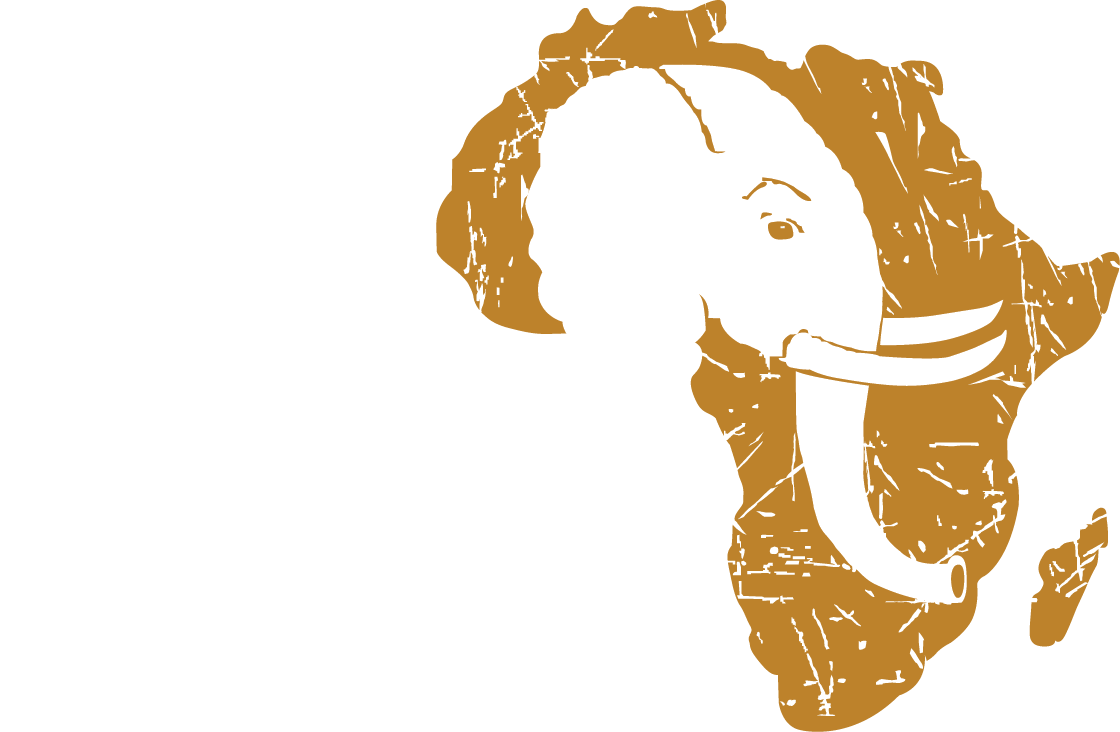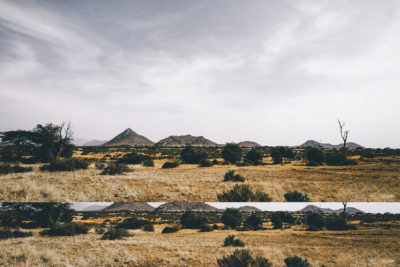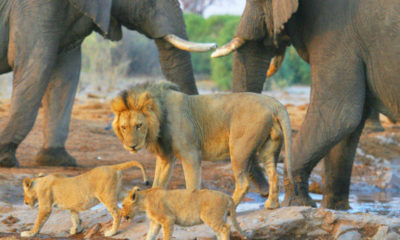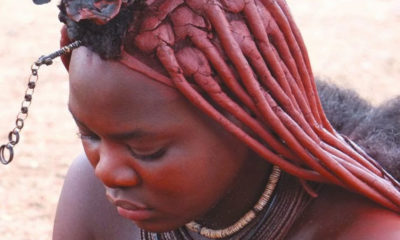Namibia
NAMIBIA FACT SHEET
I am text block. Click edit button to change this text. Lorem ipsum dolor sit amet, consectetur adipiscing elit. Ut elit tellus, luctus nec ullamcorper mattis, pulvinar dapibus leo.
Namibia is one of the most sparsely populated countries in the world. It is famous for it’s stark beauty and is a geologist’s and naturalist’s paradise.
Namibia lies on the west coast of Africa, its entire western border being the Atlantic Ocean. It is bounded on the north by Angola, the east by Botswana and the south by South Africa.
The country is divided into four distinct geographical regions: the Namib Desert, an area about 70 miles wide which extends along the entire coast; the mountainous central plateau extending over half the country, the low lying northeast and southeast semi-arid Kalahari Desert areas; and the northern area, beyond the Etosha Pan, which is bush-covered plain.
BACKGROUND NOTES
Bushmen are generally assumed to have been the earliest inhabitants of Namibia. Later inhabitants include the Nama and the Damara. The Bantu speaking Ovambo and Herero migrated from the north. The inhospitable Namib Desert constituted a formidable barrier to European exploration until the late 18th century, when successions of travelers, traders, hunters and missionaries explored the area.
In 1884 much of the coast became German South West Africa until 1915 when South Africa took control during World War 1. The Union of South Africa received a mandate by the League of Nations over the region in 1920; the United Nations retracted the mandate in 1966 and renamed the country Namibia. The country became independent on March 21, 1990.
ECONOMY
Diamond mining is the mainstay of the Namibian economy, and there are also important reserves of copper, uranium and other minerals.
Fishing, cattle rearing and tourism also play an important role. Economically Namibia is very dependent on South Africa, sharing the same currency.
CLIMATE
Namibia has a subtropical climate and is typical of semi-desert areas with hot days and cool nights. Inland summer (October to April) days are warm to hot (temperatures often exceed 100F) with cool nights. Summer is the rainy season, with most rainfall occurring in the north and northeast.
PLACES OF INTEREST
WINDHOEK
Windhoek is the capital, administrative, commercial and educational center of Namibia, situated in the center of the country at 5600 feet above sea level. Windhoek offers a fascinating blend of Western sophistication centered in three main European cultures – German, Dutch and English along with several, rather more diverse, indigenous African cultures. Sights include the three Windhoek castles built between 1913-1918 and the State Museum at the Alte Feste.
ETOSHA NATIONAL PARK
Etosha is Namibia’s foremost attraction and one of Africa’s greatest parks, covering 8,600 square miles in the northern part of the country. The park is mainly mixed scrub, mopane savannah and dry woodland surrounding the huge Etosha Pan. The pan is a silvery-white shallow depression, which is dry except during the rainy season. Along the edge of the pan are springs that attract wildlife during the dry winter season.
Etosha is famous for its huge elephant population which is most visible August and September in the center of the park. When the rain begins in October, the elephants migrate north to Angola and west to Kaokoland and begin returning in March. Large populations of zebra, blue wildebeest, springbok and oryx also make this area their home. The park is totally fenced although this does not always stop the elephants from going where they want to. Lion are commonly seen, and zebra are often sighted way out on the barren pan where lions have no cover from which to launch an attack. Black-faced impala and Damara dik-dik are two distinctive species of this area. Rhino prefer the western regions.
Birdlife is prolific with over 325 species recorded, particularly on the Etosha Pan during the summer dry rainy season from mid-January to March. However, a diverse range of bird species can be seen year round. Kites, pelicans, greater and lesser flamingoes and marabou storks migrate seasonally.
SKELETON COAST NATIONAL PARK
An unexplored paradise of breathtaking beauty, wide open spaces, distant horizons, unspoilt beaches, rugged mountains, deep canyons, smoothly contoured sand dunes and unexpected water holes. The area is a wealth of fascinating rock formations, colorful pebbles and sparkling semi-precious gems; a kaleidoscope of colors, contrasts, impressions and surprises. Skeletons of shipwrecks dot the treacherous coast of this park which stretches along the seashore and covers 2,000 square miles of wind-shaped dunes, canyons and jagged peaks of the Namib.
The park is divided into southern and northern sections. The southern section is more accessible and lies between the Ugab and Hoanib Rivers. The northern area of the park has been designated as a wilderness area and can only be visited via private aircraft.
Large game is not as evident as in Etosha National Park. Many small but fascinating creatures have uniquely adapted to this environment and help make this the most interesting desert in the world. Larger wildlife includes black rhino, desert elephant, lion, leopard and baboon. Brown hyena are plentiful but not often seen. Black-backed jackals, springbok and gemsbok are often sighted.
Another attraction of this incredibly fascinating area of Namibia is the Cape Cross Seal Colony, home of over 200,000 seals.
FISH RIVER CANYON
In the southern part of Namibia is the Fish River Canyon, second in size only to the Grand Canyon. The Canyon is 100 miles in length, up to 17 miles in width, and up to 1800 feet deep. The Fish River cuts its way through the canyon to the Orange River which empties into the Atlantic Ocean. The vegetation and wildlife are very interesting. Many red aloes make the area appear like one might imagine the planet Mars. Baboons, mountain zebra, rock rabbits, ground squirrels and klipspringer are often seen, while kudu and leopard remain elusive. There is a well-marked path into the canyon. For those going down for the day, allow 45-60 minutes down and one to two hours back up. The main hiking trail is 53 miles in length and is open May-August. The going is tough since much of the walking is on the sandy, rock=—strewn floor. No facilities exist en route, so this hike is not for the tenderfoot!
SWAKOPMUND
The resort town of Swakopmund stands by the mouth of the usually dry Swakop River, and spreads out from the short onto the flat desert plain that surrounds it. Climatically more temperate than the interior, the palm-lined streets, immaculate old buildings and well-kept gardens give it a feel of its own, making a pleasant oasis.
TOURIST INFORMATION
DOCUMENTARY REQUIREMENTS
Visitors must be in possession of a valid passport. Namibian visas are obtainable upon entry at the airport or border crossings, although US citizens do NOT require visas.
VACCINATION CERTIFICATES
No inoculations are required but anti-malaria precautions must be taken. Tape water is pure to drink.
WHAT TO PACK
Mainly casual and light-weight clothing. If flying around, remember 44lb per person packed in a soft-sided bag is the limit.
CURRENCY
The currency unit in Namibia is the Namibian dollar, denoted by the symbol “N$”, N41 = 100 cents. It is the same value as the South African Rand. Rates of exchange should be checked with your hotel or bank, the latter always giving a better rate.
BANKING HOURS
8.30AM to 3.30PM Monday thru Friday; 8.30AM to 11AM Saturday.
GOOD BUYS
Semi-precious stones and jewelry (SWA Gemstones in Outjo, south of Etosha National Park is excellent), karakul wool rugs, mats and wallhangings, Ovambo baskets, carvings of verdite, onyx and soapstone are the best buys here. Normal business hours are Monday to Friday 8AM-1PM and 2.30PM-5.30PM. On Saturday 8AM-1PM. In Windhoek, every 1st and 3rd Saturday in the month there is a street market in Kaiser Street. The Tal Street Market operates from Monday to Saturday.
LANGUAGE
The official languages of Namibia are Afrikaans, English and German, although English is spoken and understood throughout the country.
VOLTAGE
Electric current is 220-240 volt AC at 50 cycles per second.
WATER
All water in the towns is safe to drink.
TIPPING
If it is not included, 15% is the norm. On safari, approx. $10 per person per day.
CREDIT CARDS
Credit cards are generally acceptable in all hotels and restaurants.
TAX
There are no international departure taxes.





